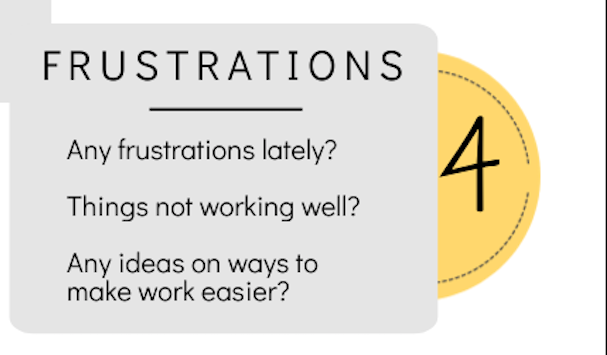Standard Operating Procedure: Monthly Team Member Check-In
Of my own accord, I independently created these project pieces to test my professional skills and expand my knowledge and experience. I was not hired or paid to complete this work.
As a concluding piece of my team-building project for Temple Coffee Roasters, I developed a monthly check-in Standard Operating Procedure for managers to authentically engage their team members inspiring sustainable growth over time.
Acquiring the talent and securing the right hire are vital steps to building a solid team. However, without a structure committed to developing, empowering, and engaging those special finds, companies will not be able to retain the quality players they need to grow long-term.
I developed a monthly check in procedure to aid managers in not only investing in the development of their team, but to encourage employee engagement in that process.
Watch how I designed this SOP using Piktochart below:
Here’s a quick walk-through exploring why Piktochart is my go-to in creating engaging visuals.
1. VIBE CHECK
The first step we take in this check in SOP is prompting managers to touch base with their team member on an appropriately personal level. Oftentimes, team members are balancing multiple jobs, school, and other responsibilities. Before diving into setting the next month’s goals, managers ought to take a moment to get a gauge about how their team member feels about their current workload.
In order to set the stage for open communication, managers ought to start the interaction on a warm note by asking how the team member is managing their workload.
This also gives space for initial concerns to be voiced. Perhaps the team member needs to inform the manager of any misconduct or troubling issues they’ve witnessed happen in the cafe. This gives an opportunity to bring important concerns to the table.
2. THE AWESOME
Next is “the awesome” step.
Here’s where the manager names areas where the team member is showing growth (especially if they correlate with goals that the manager and employee set together), places they are naturally strong, and specific examples of them going above and beyond.
According to Manila Recruitment, lack of recognition is one of the chief reasons companies experience employee turnover. Regardless of whether or not that team member is the star of the cafe, it’s vital that managers show they don’t just recognize “opportunities for improvement,” but also the areas where their employees are doing well.
Pointing out how team members are positively affecting their workplace is helpful in encouraging that quality of performance to continue. Diving into a laundry list of new goals in this check in without first acknowledging and praising areas of strength and growth will only lead the team member to feel under-appreciated and overworked.
3. NEXT LEVEL
Phrasing the critique portion as “let’s bring it to the next level” is intentional in using achievement-oriented words to prime the employee to succeed.
According to Science of People’s Vanessa Van Edwards in a conversation with Lewis Howes, people will perform better, longer, and enjoy their work more when tasked with responsibilities using dopamine-triggering phrases and words. Succeed, master, conquer, and win are among words that managers can use in conveying areas where they’d like their employees to improve.
For example, instead of phrasing a critique as:
“You need to improve your milk texture. It’s not up to company standards.”
The manager could say: “I can see you pouring some crazy new latte art designs soon! Choose a design you want to learn and let’s work on mastering your milk texture to help us practice it Iuntil we nail it!”
4. FRUSTRATIONS
Next, we move onto any frustrations the employee wants to air and constructively troubleshoot in this check in. Anything from cafe equipment hindering efficiency, issues arising with fellow team members, or scheduling conflicts.
Again, this will allow an open dialogue dynamic to be cultivated between manager and employee and create a two-way feedback street.
For example, maybe the team member brings up: “When I’m working as your barback, it’s difficult for me to retain the details of three or more orders at once. When we’re working together, can you tell me the orders one-by-one or write the details on the to-go cups? That’ll really help me do my best when we’re on shift together.”
Making time to recognize that there are areas the manager or company can improve to best support their people will foster trust and safety among leadership and team.
5. GOAL SETTING
Finally, we move into setting goals.
Again, we go back down that two-way street. The manager and employee will then agree on goals for each other moving into the next month.
These goals can be both professional as well as personal goals outside the scope of the cafe.
Following up on the examples mentioned in the previous section, perhaps that month’s goals would look like:
Team member: practice mastering consistent milk texture and learn how to pour an additional latte art design this month
Manager: limit order relaying to team member to 1-2 orders at once and/or write the details on the to-go cups this month
Quality team members are retained in positions in which they feel appreciated, seen, heard and empowered to grow. As a concluding piece to my month-long team-building project, this strategic monthly check-in format will work to cultivate team growth over time. Companies like Temple Coffee Roasters can then better retain their talent and reap the benefits of a healthy company fostering a healthy team.






